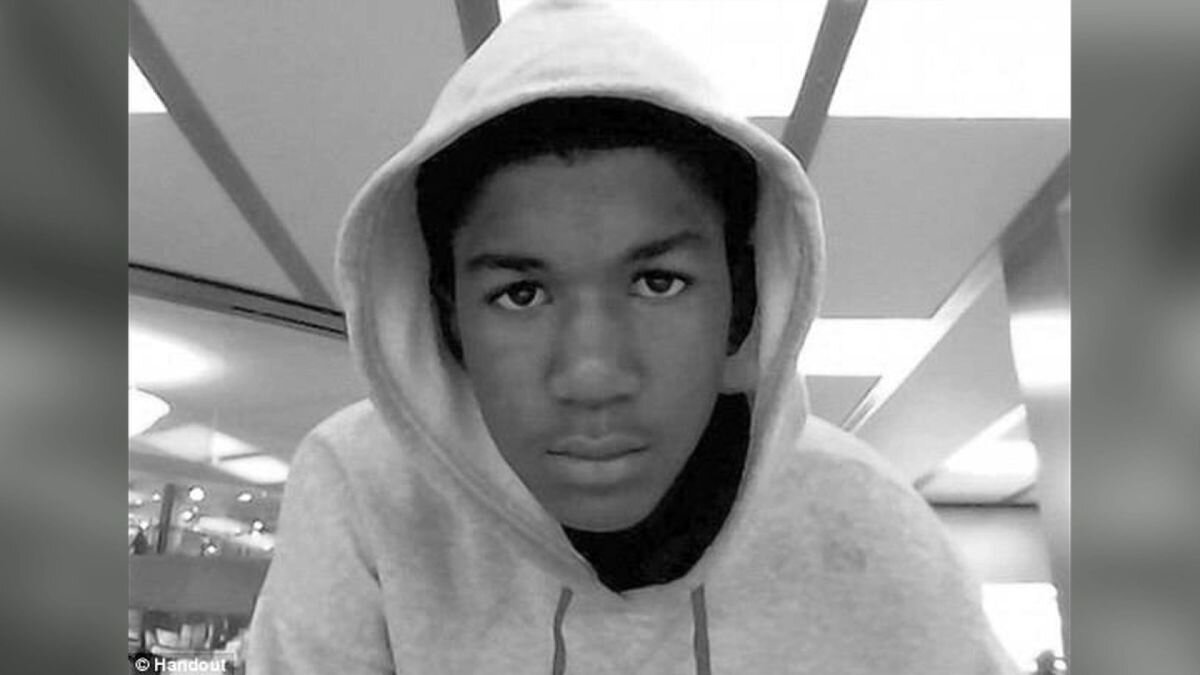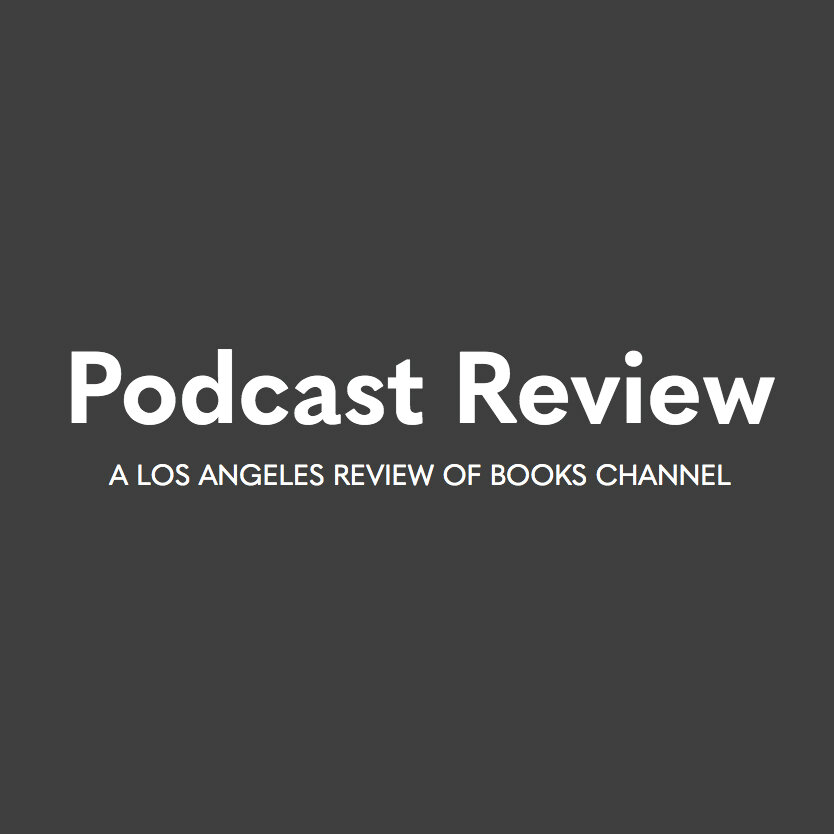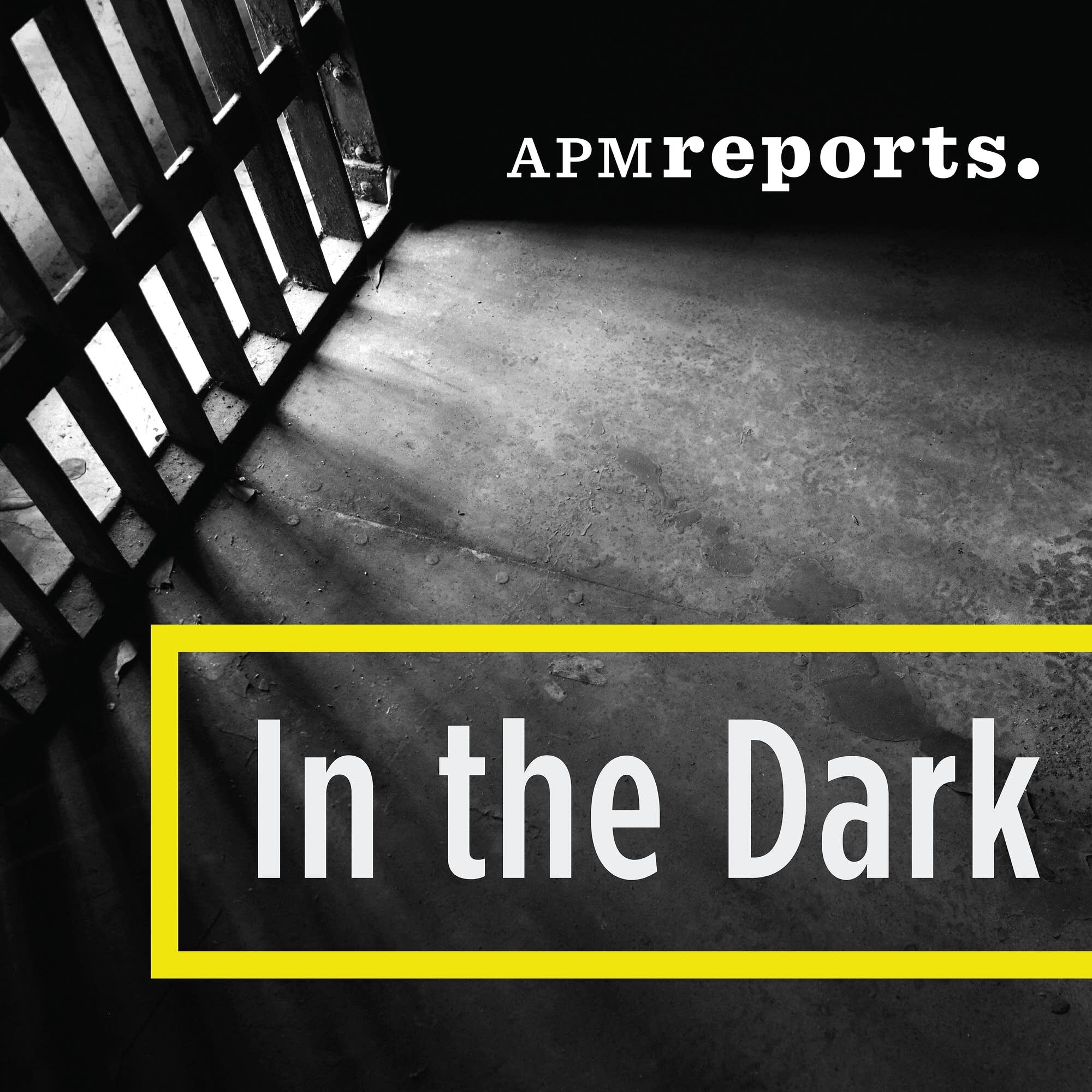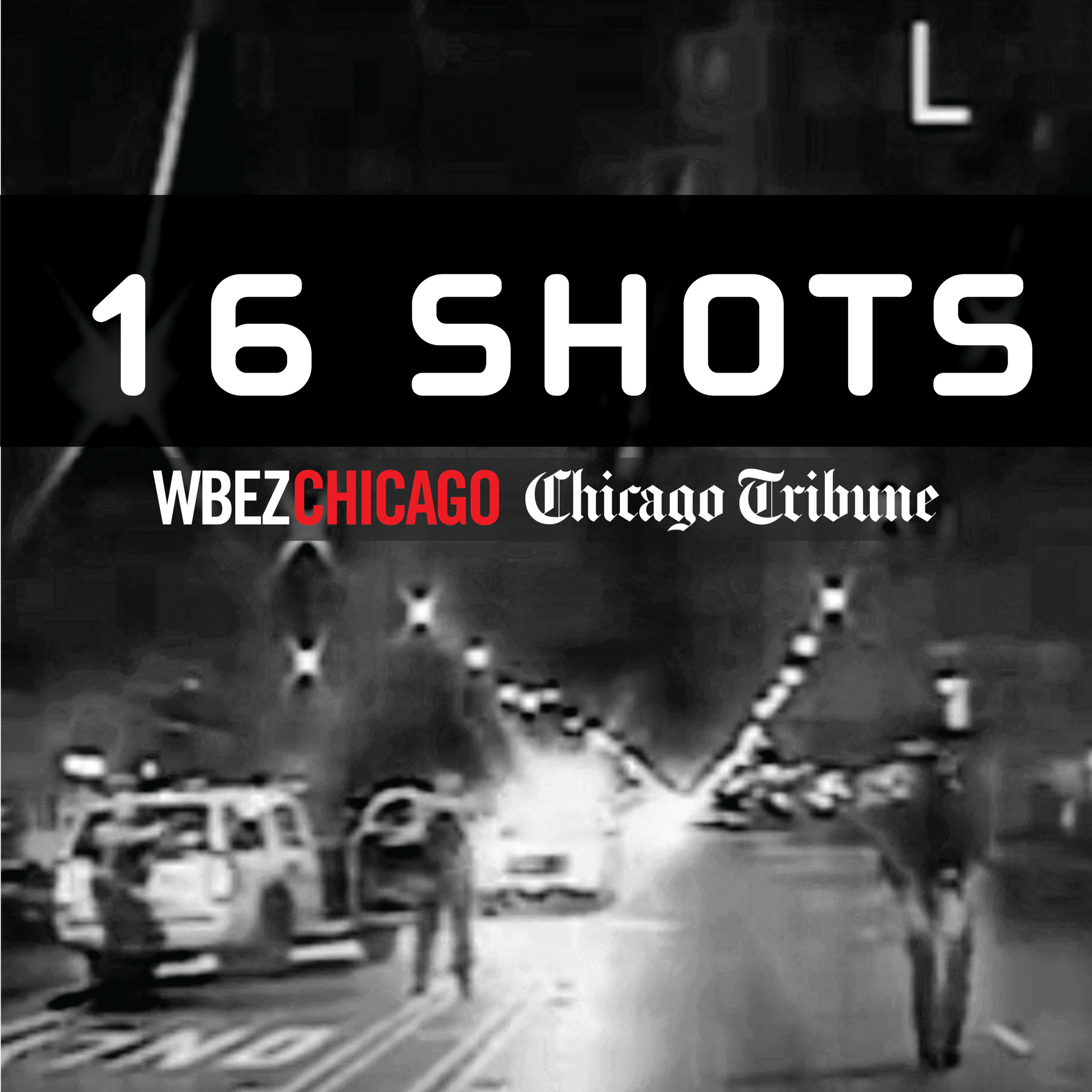A mother investigates her son’s murder and joins forces with a team of journalists to confront Chicago Police.
Somebody is a co-production of the Invisible Institute, The Intercept, Topic Studios, and iHeartRadio, in association with Tenderfoot TV.
LISTEN TO THE PODCAST AND READ THE TRANSCRIPTS
Somebody explores the racial disparities and turbulent relationship between law enforcement and citizens in one of America’s largest cities.
LIST OF CHARACTERS
Courtney Copeland - a 22-year-old from suburban Chicago, a senior sales rep at World Ventures
Shapearl Wells - Courtney’s mother and host of the podcast
Alison Flowers - a journalist from the Invisible Institute who works on the investigation
Brent Wells - Courtney’s stepfather
Renee Faulkner - Courtney’s grandma
Claressa Hawkins - a nurse on duty when Courtney was brought into the hospital
Alma - Courtney’s “secret” girlfriend who worked with him at World Ventures
Elena - a 911 caller who heard gunshots and witnessed a car driving down her alley
Edgar - Elena’s husband, who saw a car in his alley and was able to describe it and the men inside
Randall - a man in the neighborhood who was returning home from the gym when he saw three men in a car who appeared to throw a gun
Santita Jackson - a friend of Shapearl’s who is a political commentator and the oldest daughter of civil rights leader Rev. Jesse Jackson
Chance the Rapper - Courtney’s high school friend
EXAMINE MEDIA COVERAGE OF COURTNEY COPELAND’S DEATH
CHECK OUT THESE ADDITIONAL RESOURCES
VIDEO: REV. JESSE JACKSON: “I AM SOMEBODY!”
“I may be poor, but I am Somebody! I may be young, but I am Somebody. I may be on welfare, but I am Somebody. I may be small, but I am Somebody. I may have made mistakes, but I am Somebody. My clothes are different. My face is different. My hair is different, but I am Somebody.”
VIDEO: CHANCE THE RAPPER: “EVERYBODY’S SOMETHING”
The theme for the podcast, “Everybody's Something”, comes from Chance the Rapper's “Acid Rap” mixtape.
AUDIO: DR. MARTIN LUTHER KING, JR.: “RISE UP AND SAY, ‘I AM SOMEBODY.’”
“And so every black person in this country must rise up and say I’m somebody; I have a rich proud and noble history, however painful and exploited it has been. I am black, but I am black and beautiful.”
IMAGE: MEMPHIS SANITATION WORKERS STRIKE, 1968
Teaching Tolerance: “Richard L. Copley took this photograph at the Memphis sanitation workers strike in 1968.” Pair it with StoryCorps audio from the strikers.
ARTICLE: “SCOOP AND RUN: WHERE COP CARS DOUBLE AS AMBULANCES”
The Trace: “In Philadelphia, police often race shooting victims to the hospital rather than wait for paramedics. Experts in trauma and policing say more cities should consider it.”
VIDEO: FACEBOOK LIVE: “THE INVESTIGATION OF COURTNEY COPELAND’S MURDER”
The Intercept: On April 30, 2020, a Facebook live event hosted by Intercept co-founding editor Jeremy Scahill featured Shapearl Wells in conversation with Alison Flowers, a journalist at the Invisible Institute.
VIDEO: THE FREEDOM OF INFORMATION ACT
Much of the source material for the podcast was gathered using the Freedom of Information Act (FOIA). This is a quick explainer video from the Department of Justice on what the purpose of the FOIA is and how it works.
ARTICLE: “GOOD COPS, BAD COPS”
The New Yorker: “The code of silence has protected some particularly reprehensible behavior in the C.P.D., much of it directed at the city’s black population. Perhaps the most egregious was that of Jon Burge, a commander who, in the nineteen-seventies and eighties, headed a group of officers that he called the Midnight Crew. To extract confessions, the crew tortured dozens of men, most of them African-American, using electric shock, suffocation, and Russian roulette. Last May, the city agreed to a reparations agreement that included $5.5 million for the victims and an obligation to teach the episode in the public-school curriculum. “
ARTICLE: “WE’RE NOT SEEING MORE POLICE SHOOTINGS, JUST MORE NEWS COVERAGE” INVISIBLE INSTITUTE
CNN: “The headlines make it feel as if the country is experiencing an unprecedented wave of police violence, but experts say that isn't the case. We're just seeing more mainstream media coverage, and for a variety of reasons.”
CHECK OUT THESE RELATED PROJECTS FROM THE INVISIBLE INSTITUTE
READ REVIEWS OF THE SOMEBODY PODCAST
CHECK OUT EVERYONE WHO WORKED ON THE PODCAST
Host: Shapearl Wells; Producers: Alison Flowers and Bill Healy; Story Editor: Sarah Geis; Associate Producer: Ellen Glover; Executive Producer, Invisible Institute: Jamie Kalven; Executive Producers, Topic Studios: Maria Zuckerman, Christy Gressman and Leital Molad with Special Thanks to Lizzie Jacobs; Supervising Producer, The Intercept: Roger Hodge; Sound Design: Carl Scott and Bart Warshaw; Mix Engineer: Michael Raphael; Additional Reporting: Sam Stecklow, Annie Nguyen, Kahari Blackburn, Rajiv Sinclair, Henri Adams, Matilda Vojak, Dana Brozost-Kelleher, Frances McDonald, Diana Akmakjian, Andrew Fan, Erisa Apantaku and Maddie Anderson; Translation Support: Benny Hernandez-Ocampo and Emma Perez; Fact Checking: Nawal Arjini; Original Music: Eric Butler and Nate Fox of the Social Experiment; Special thanks to Chaclyn Hunt, Maira Khwaja, Andrew Fan, Anwuli Anigbo, Trina Reynolds-Tyler, Sukari Stone, Erisa Apantaku, Craig Futterman, Rick Rowley, Yanilda Gonzalez, Forrest Stuart, Mariah Garcia, Sarah Kinter, Shannon Heffernan, Aaron Moselle, Alan Mills, Vidura Jong-Bahadur, Jason Schumer, Priyanka Farrell, Lucy Papachristou, Keisa Reynolds, Justin Williams and the Jonathan Logan Family Foundation Media Center, Matt Topic, Chris Rasmussen, Bennett Epstein, David Bralow and Julie Wolf; Elizabeth Van Brocklin’s original story, “Scoop and Run: Where Cops Cars Double As Ambulances” first appeared in The Trace; Theme song “Everybody’s Something” by Chancelor J. Bennett and DJ Ozone with compositions by Roger Karsher, Chuck Magione and James Yancey of Universal Music Publishing Group and Slum Village (R.L. Altman III, Titus Glover/Baatin, J Dilla); recording artist/performance by Chance the Rapper, appearing courtesy of himself and Chance the Rapper LLC.
CHECK OUT OTHER INVESTIGATIVE PODCASTS
ADDITIONAL MATERIALS FOR TEACHERS
The Somebody Podcast Curriculum consists of 10 lessons focused on strengthening high school students’ critical listening abilities. The curriculum includes close-listening excerpts from the podcast along with transcripts and guided questions. It is meant to be adaptable for students doing online distance learning.
In this moment when the relationship between police and communities of color is beneath a microscope, these lessons present an opportunity to bring those larger conversations into the classroom.
ENDURING UNDERSTANDINGS
Our civic structures, such as police and fire departments, rely on trust. When that trust breaks down, they do not work effectively.
Individuals are shaped by the experiences that they have had personally. To understand alternative perspectives, we must listen to others’ experiences.
As citizens, we have the right to demand information from public institutions. This keeps us informed and holds institutions accountable.
Facts can be difficult to define because we often color them with our own biases and assumptions.
THE LESSONS
Lesson #1: Understanding Perspectives After reading and discussing background information about the case, students are introduced to the idea of critical listening.
Learning Target: Analyzing an author’s tone in order to predict their purpose
Lesson #2: Characterizing Courtney Students analyze Courtney Copeland as a character, and discuss how society dismisses victims of gun violence when they are “faceless.”
Learning Target: Characterizing someone based on details from multiple accounts and analyzing why learning about victims on a personal level can help create empathy
Lesson #3: Was Courtney “Somebody” or “Some Body?” Students analyze a speech by Dr. Martin Luther King, Jr. in which he expounds on the importance of believing that you are somebody. Learning Target: Analyzing how an author develops a complex concept over the course of a text.
Lesson #4: Trust Students look closely at the words and actions of police investigating Courtney Copeland’s death and evaluate Shapearl Wells’ perspective. Learning Target: Justifying and explaining complex perspectives
Lesson #5: The Power of Media Students think deeply about the role images have played in the Civil Rights Movement and how social media has made dissemination and access to images easier. Learning Target: Analyzing how social media has helped create a wider awareness of social injustice
Lesson #6: The Talk Students dig into the mistrust that exists between communities of color and the police by listening closely to Shapearl Well’s conversation with officers. Learning Target: Analyzing how personal experiences can create conflicting perspectives
Lesson #7: Walking Back Assumptions Students work through a series of clips to determine what facts are revealed and what conclusions can be drawn from them. Learning Target: Differentiating between assumptions and corroborated facts and drawing reasonable conclusions
Lesson #8: Shapearl’s Mission Students track the development of Shapearl Wells’ motivations over the course of the podcast. Learning Target: Analyzing word choice to track the development of a complex character
Lesson #9: The Role of the Police Students review the investigative work done by Shapearl Wells and the Invisible Institute.
Learning Target: Defining criteria and evaluating the effectiveness of an approach
Lesson #10: The Timeline Students create a timeline of the night Courtney died, before moving on to final discussions and writing assignments. Learning Target: Synthesizing sources to create an order of events
FREQUENTLY ASKED QUESTIONS
My students don’t have the ability to listen on their own!
If you can’t assign listening as homework, listen as a class. Students can follow along with the transcripts and guided questions. You can ask the questions or you can ask students to turn-and-talk or think-pair-share to answer them.
I don’t have time to listen in class and still complete all of the lessons!
Using the transcripts with the guided questions can still be an enriching experience, especially for students new to critical listening. Try listening to just the first few episodes and completing the corresponding lessons. Or complete all the listening and choose the lessons you find most important, engaging, or relevant.
This curriculum appears to be VERY discussion-based. My students need movement and constant engagement!
This curriculum consists of close-listening excerpts and guided questions meant to help students strengthen their critical listening abilities, like close-reading a text. It is meant to be adaptable. If you engage students with movement and active learning, apply your strategies to the lines of questioning provided.
You don’t include any time for students to debrief their own thoughts and feelings after listening!
Each lesson is meant to immediately engage students in the central questions and understandings. If you want to encourage more organic discussion, try working it in after the first step of each lesson. After this “hook,” you can encourage students to share their thoughts for 5-10 minutes before moving on with the lesson.
What about distance learning?
We are facing the very real possibility that schools will look different in the future, with students doing much of their learning online. Podcasts are easily adapted to distance learning as they are web-based. Students can make copies of all handouts, and the guided listening packets are easily shared.
Why doesn’t this curriculum include more writing?
I find that students write best when I dedicate time just for that task rather than trying to jam it in at the end of a full lesson. Teachers can definitely use the extensions at the end of each lesson to create writing prompts for students.









































